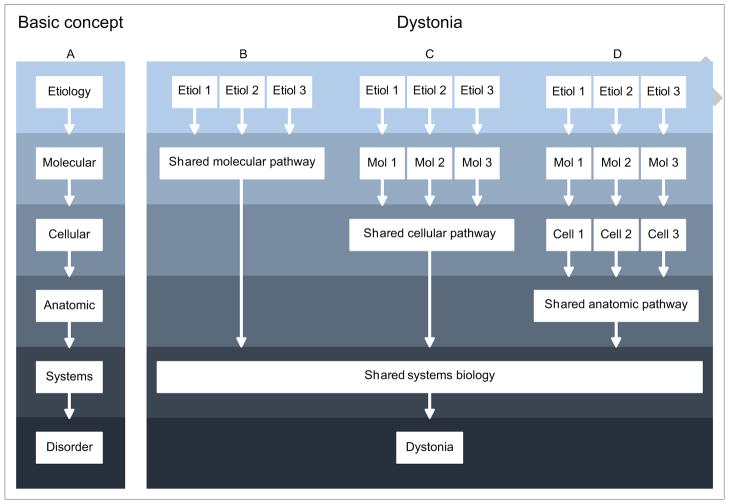Figure 1.
Conceptual model for accommodating differences and similarities among the many different types of dystonia. The basic concept for pathogenesis involves a series of events at the molecular, cellular, anatomic, and/or systems levels (A). In dystonia, pathological changes associated with an array of initial insults may converge in shared downstream pathways to produce the final syndrome. Some may converge at the molecular or biochemical levels, for example by affecting the same neurotransmitter system (B). Others may converge at the cellular level, by affecting the same type of cell to cause dystonia (C). Still others may converge at higher biological levels, such as physiological or anatomical pathways. Presumably, of these pathways converge at some final common pathway that produced excessive involuntary muscle contractions common to all dystonias. However this is a conceptual model only, and it remains feasible that there are multiple entirely independent pathways that produce a similar final phenotype.

